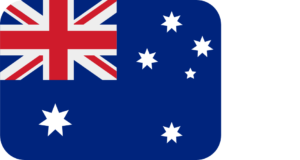In June, global equities rebounded as US economic data remained resilient. This was despite major central banks continuing tightening monetary policy in response to ongoing high inflation.
Developed market equities outperformed Emerging markets with the MSCI World ex-Australia (unhedged) Index gaining 3.2% for the month.

United States
Equity markets were stronger in June, despite concerns about recession risk and the resolution of the debt ceiling. The S&P 500 surged by 6.6%, largely driven by strong performance for the Nasdaq Composite Index, which is tech-heavy.
There were some signs of the US labour market cooling with a notable decrease in the number of new jobs added in June when compared to May. However, the unemployment rate declined slightly to reach 3.6% (down by 10 basis points). The inflation rate in June moderated slightly and the US Federal Reserve left policy rates unchanged, though they expressed an intention to increase rates in future months.

Europe
European equities experienced positive returns, with the MSCI-AC Europe Index (unhedged) gaining 1.9% for the month. Persistent inflation in the UK remains a focus for the Bank of England. Inflation there remained high at 8.7% in May. In the Euro area, inflation continued to fall, dropping to 5.5% in June.

China
The performance of emerging market equities gained modestly in June (a 1% increase for the MSCI Emerging Markets Free Index (unhedged), despite the challenges China faced. China has loosened monetary policy to support the post-COVID recovery in response to a slowdown in economic activity. There were also some indications of a de-escalation of US/China tensions. This was in evidence during an unexpected meeting between the US Secretary of State, Antony Blinken, and Chinese President Xi.

Australia
Equity returns were somewhat positive in June, with the ASX 300 returning 1.7%. The Materials sector was strongest, up 4.6%, followed by Financials up 3.1%, whereas the Healthcare and Telecommunication Services sectors were weakest, both delivering negative returns in June. The Reserve Bank of Australia took further measures to address high levels of inflation by increasing the policy rate by 0.25% and bringing the cash rate to 4.1%. The RBA are leaving rates steady for July to allow time to assess the impact of an already aggressive series of rate rises and the general economic conditions.
Retail sales grew further in June and there was a slight improvement in consumer confidence. May data released in June indicated that job vacancies are more stable, suggesting a potential easing in labour demand.

Currency and Bonds
The Australian Dollar (AUD) was stronger against most major trading partners’ currencies. The AUD increased by 2.9% against the US Dollar, 0.5% against the Euro, and 6.4% against the Japanese Yen.
Yields rose in response to expectations of further tightening measures from Central Banks in their attempts to further drive down inflation rates, with 10-year yields increasing by 18bps in the US to 3.8% and 42bps in Australia to 4.0% at month end.


